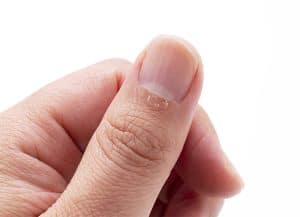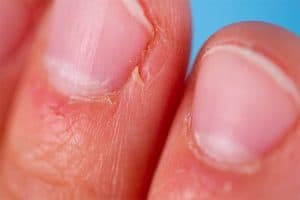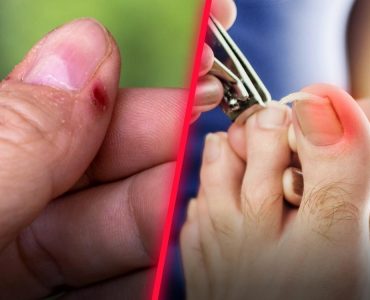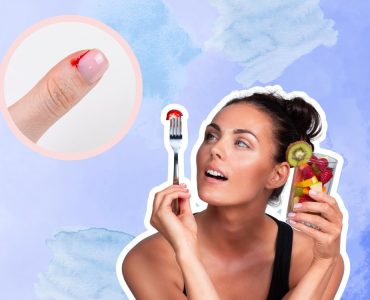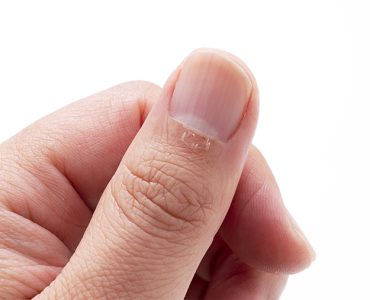Hangnails can be a painful and bothersome condition that, if left untreated, can lead to infection and further complications. In this article, we will explore the causes and symptoms of hangnails, provide immediate care tips, delve into effective home remedies, discuss medical treatment options, and offer preventative measures for long-term care.
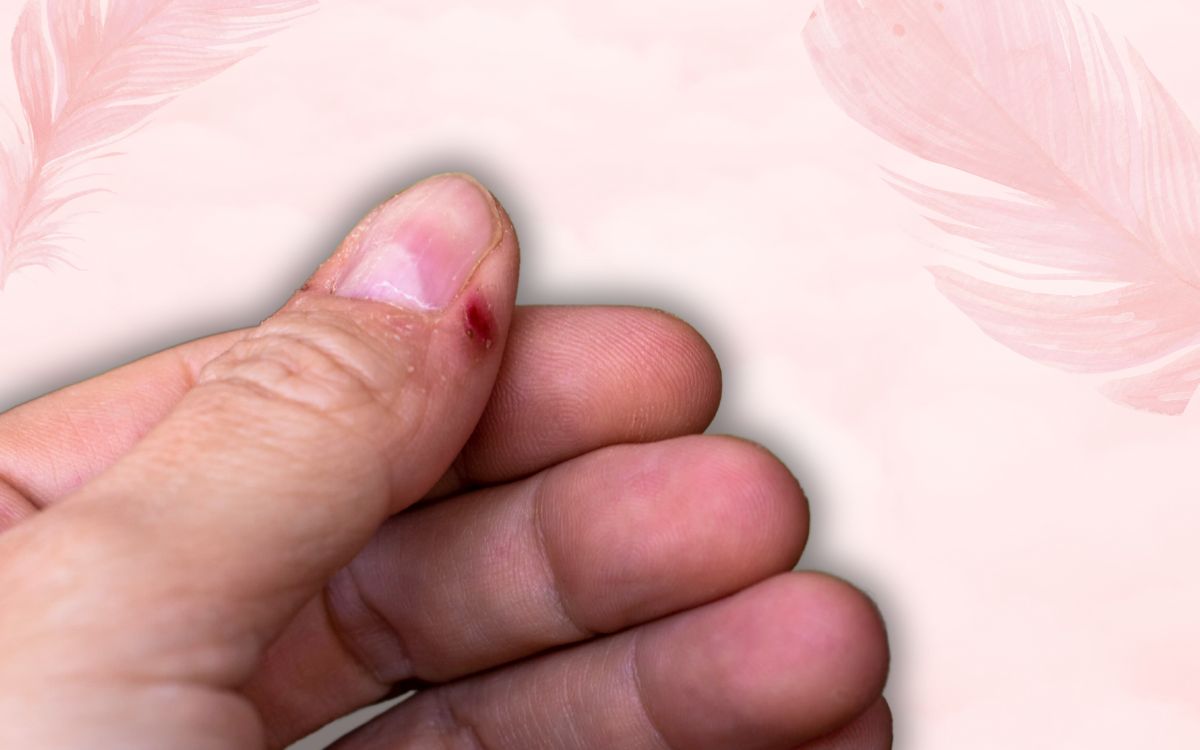
By following these guidelines, you can effectively manage and treat your infected hangnail, promoting faster healing and preventing future occurrences. Let’s dive in and learn how to give your hangnail the attention it deserves.
Understanding Hangnails
Hangnails are a common and often uncomfortable condition that affects many people. Understanding what hangnails are and their causes is essential in effectively treating and preventing them. Let’s delve deeper into this topic.
Definition and Causes
Hangnails, also known as agnail or stepped-on nail, refer to the small pieces of torn or dry skin that appear at the edge of the nail bed. They can occur on both fingers and toes. Hangnails are characterized by their painful and often inflamed nature, making daily activities such as typing, writing, or even simple hand movements uncomfortable.
Various factors contribute to the development of hangnails. One common cause is dry skin. When the skin around the nail bed becomes excessively dry, it loses its elasticity and is more prone to tearing, resulting in the formation of hangnails.
Additionally, habitual nail biting or picking can traumatize the cuticle area, leading to the development of hangnails. Frequent exposure to water and chemicals, such as during dishwashing or excessive handwashing, can also strip the skin of its natural oils, causing it to become dry and susceptible to hangnails.
Symptoms of an Infected Hangnail
While hangnails can be uncomfortable on their own, they can become more problematic if they become infected. It’s important to recognize the signs of an infected hangnail in order to seek appropriate treatment promptly.
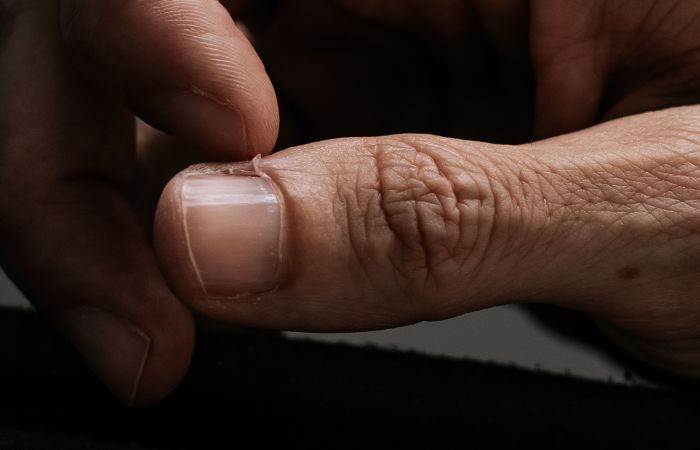
An infected hangnail may exhibit redness, swelling, and tenderness around the affected area. The skin around the hangnail may feel warm to the touch, and there might be the presence of pus or discharge.
In some cases, the infection can spread beyond the hangnail, causing additional swelling and discomfort. Infected hangnails often result in pain, making it difficult to perform daily tasks that involve using the affected finger.
Immediate Care for an Infected Hangnail
When dealing with an infected hangnail, immediate care is crucial to prevent further complications and promote healing. Taking prompt action can help alleviate pain, reduce inflammation, and prevent the infection from spreading. Here are some essential steps you can take for immediate care.
Cleaning the Affected Area
The first step in treating an infected hangnail is to ensure the affected area is clean. Start by washing your hands with warm water and a mild, antibacterial soap. Gently cleanse the area around the hangnail, being careful not to cause further irritation. After washing, pat the area dry with a clean towel or let it air dry.
Soaking the Hangnail
Soaking the infected hangnail in warm water can provide relief and help draw out impurities. Prepare a small basin or bowl with warm water and add a teaspoon of salt to create a saline solution. Stir the mixture until the salt is dissolved, and then submerge the affected finger in the solution for about 10 to 15 minutes. The warm water will help reduce inflammation, while the salt acts as a natural antiseptic.
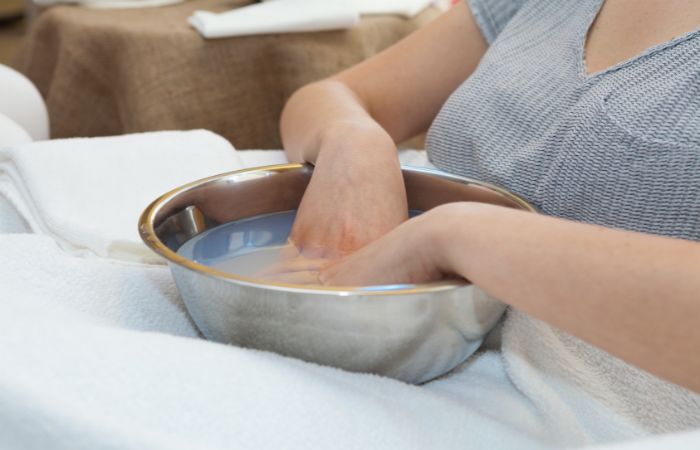
Applying an Antiseptic Solution
After soaking, it’s important to apply an antiseptic solution to the infected hangnail. This helps prevent further infection and promotes healing. Choose an appropriate antiseptic solution, such as hydrogen peroxide or an over-the-counter antimicrobial ointment. Gently apply the solution to the affected area, ensuring complete coverage. Be cautious not to put too much pressure on the hangnail to avoid causing additional pain or irritation.
Protecting the Hangnail
To prevent further irritation and protect the hangnail from dirt or bacteria, it’s advisable to cover it with a clean, sterile bandage. Choose a bandage that is appropriately sized to cover the affected area without putting excessive pressure on the hangnail. This will help create a barrier and promote a clean healing environment. Replace the bandage regularly to maintain cleanliness and prevent infection.
Read This Next:
Home Remedies for Infected Hangnails
In addition to immediate care, there are several effective home remedies that can help treat and soothe infected hangnails. These remedies utilize natural ingredients and simple techniques that are easily accessible. Incorporating these remedies into your routine can provide relief, reduce inflammation, and promote healing. Let’s explore some of these home remedies.
Warm Compress
Applying a warm compress to the infected hangnail can help alleviate pain, reduce swelling, and improve blood circulation to the area. Start by soaking a clean washcloth or small towel in warm water. Wring out the excess water and gently press the warm compress onto the affected finger for about 10 to 15 minutes. Repeat this process a few times a day to experience the soothing benefits.
Epsom Salt Soak
Epsom salt is known for its therapeutic properties and can be beneficial in treating infected hangnails. Fill a basin or bowl with warm water and add a tablespoon of Epsom salt. Stir the mixture until the salt dissolves, and then soak the infected finger for 10 to 15 minutes. The Epsom salt helps reduce inflammation and acts as a natural antiseptic, aiding in the healing process. Repeat this soak daily until the infection subsides.
Natural Oils and Moisturizers
Certain natural oils and moisturizers have properties that can help heal and soothe infected hangnails. Tea tree oil, for example, is known for its antibacterial and antifungal properties. Apply a few drops of tea tree oil directly to the infected area, gently massaging it into the skin.
Coconut oil is another excellent option as it helps moisturize and nourish the skin, promoting healing. Apply a small amount of coconut oil to the hangnail and surrounding area, allowing it to absorb. These natural remedies can be applied multiple times a day for optimal results.
Proper Nail Care
Maintaining proper nail care is crucial in preventing and managing hangnails. Regularly trimming your nails and keeping them at a moderate length can minimize the risk of hangnails. Use sharp, clean nail clippers to avoid tearing the skin.
Additionally, moisturizing your cuticles with a nourishing oil or cream can help keep the skin around the nails hydrated and less prone to dryness and tearing. Avoid excessive manicuring or pushing back the cuticles, as this can cause further trauma to the area.
Prevention and Long-Term Care
Preventing the occurrence of hangnails and implementing long-term care practices is essential in maintaining healthy nails and minimizing the risk of infection. By following these preventive measures and incorporating them into your daily routine, you can significantly reduce the chances of developing hangnails in the future.
Read This Next:
Maintaining Good Hand Hygiene
Proper hand hygiene is crucial in preventing hangnails and reducing the risk of infection. Wash your hands regularly using warm water and a mild, antibacterial soap. Be sure to thoroughly dry your hands after washing, as moisture can contribute to skin dryness and vulnerability to hangnails.
Additionally, avoid overwashing or using harsh chemicals that can strip the skin of its natural oils. Consider using a moisturizing hand sanitizer when handwashing is not readily available.
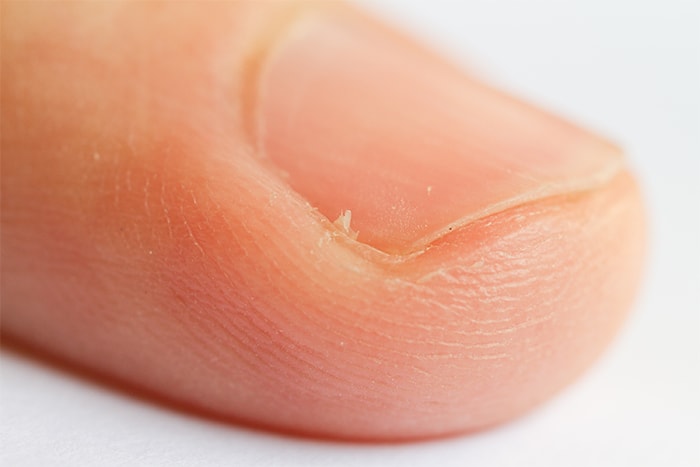
Avoiding Nail Biting and Picking
Habitual nail biting and picking can significantly contribute to the development of hangnails. Breaking this habit is key to preventing future occurrences. Find alternative stress-relieving activities or substitutes for nail biting, such as fidget toys or chewing gum. Keep your nails trimmed short to minimize the urge to bite or pick at them. If necessary, seek professional help or consider using bitter-tasting nail polishes or nail wraps designed to discourage nail biting.
Moisturizing and Nourishing the Nails
Proper moisturization and nourishment of the nails and cuticles are essential for maintaining their health and preventing hangnails. Apply a moisturizing cream or oil to the nails and cuticles regularly, especially after handwashing or when exposed to harsh chemicals.
Look for products that contain ingredients like shea butter, vitamin E, or jojoba oil, which provide deep hydration and promote nail and cuticle health. Massage the moisturizer into the nails and cuticles in gentle circular motions to enhance absorption.
Conclusion
Taking care of an infected hangnail is crucial to prevent further discomfort and potential complications. By understanding the causes and symptoms of hangnails, practicing immediate care techniques, and exploring home remedies, you can alleviate pain, reduce inflammation, and facilitate healing. In some cases, medical treatment may be necessary, and seeking professional advice is recommended for severe or persistent infections.
Remember to prioritize preventative measures, such as maintaining good hand hygiene, avoiding nail biting, and moisturizing your nails and cuticles regularly. By implementing these strategies, you can not only treat your current infection but also minimize the risk of future hangnails. Take charge of your hangnail health and enjoy healthier, happier fingers.



